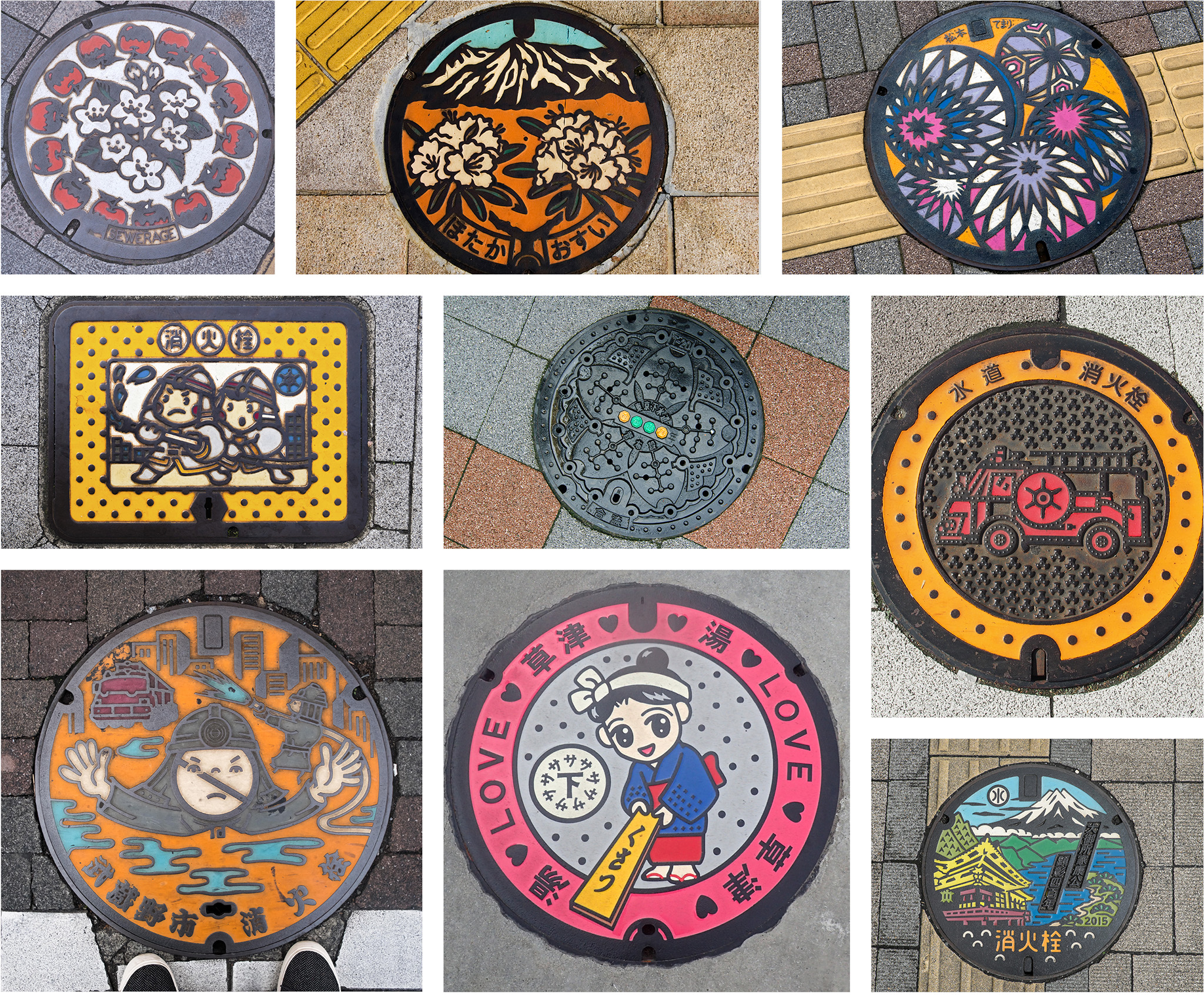Focus on
マンホールの蓋
manhole covers
Art beneath your feet
The Japanese have a talent for elevating the mundane into a thing of beauty, and there is no finer example of this than the humble manhole cover. Originally designed to make taxpayers more amenable to paying for costly drainage projects, Japan’s decorated manhole covers have become a source of local pride, highlighting regional attractions, wildlife, festivals, historic events, and even folklore.
Matsumoto (Nagano Prefecture) celebrates the local craft of making temari—handmade balls of intricately woven silk yarn used as gifts and decorations—while Kusatsu in Gunma Prefecture depicts a woman in traditional dress carrying out yumomi, a centuries-old method to cool the town’s hot-spring water to bathing temperature by stirring it with wooden paddles. Throughout the country you can spot an array of colorful designs that celebrate Japan’s fire departments with depictions of firefighters at work.
Not surprisingly, these manhole covers are now a social media phenomenon. You can track them with apps like Manhoo!, which lists the locations of more than 3,000 different designs around the country. In February 2019, there was even a Manhole Cover Festival held in Tokyo, complete with stands selling manhole cover snacks, pens, pin badges, and trading cards: everything a drainspotter could dream of.
19,000
different cover designs are in use in Japan, according to an estimate by the Japanese Society of Manhole Covers.
drainspotting
Dedicated “manholers” travel across the country, posting their favorites on social media.
HANDMADE
The manhole covers are cast in local foundries. Colored resin is poured by hand into the mold.

D Japan’s colorful manhole covers not only vary according to the region that they’re in, but also differ depending on the utility type and the manhole manufacturer.
